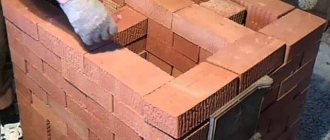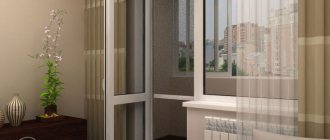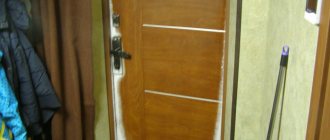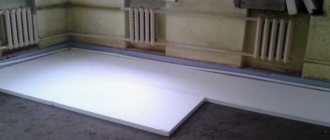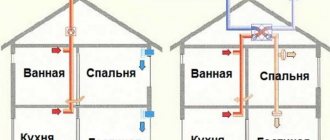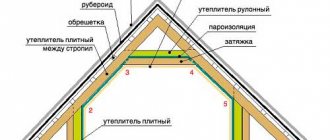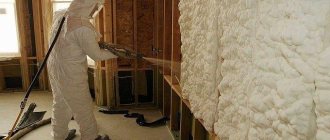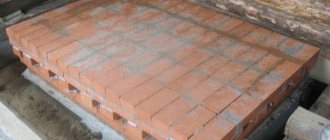Cast iron firebox with glass
A fireplace is a symbol of home and comfort. For a country house and cottage, this is also a way to heat the house, so in this article we will talk about how to choose the right inserts for cast iron fireplaces with glass and install them yourself.
Having decided to install a fireplace in their dacha, people wonder which firebox to choose. Today you can find many options on the market and each of them has its pros and cons.
One of the main parts on which the effectiveness of a fireplace depends is the firebox. It is the “heart” of the fireplace where fuel is burned. The duration of operation of the fireplace and its performance depend on the material, design and successful installation of the firebox.
Fireplace in the country
Features and types of fireplace inserts
It is important to remember that the fireplace insert will work as efficiently as possible if certain conditions are met:
- the chimney must work reliably;
- the fuel used to light the fireplace must be of high quality and not contain any harmful impurities;
- Skill in operating a fireplace is welcome.
High-quality operation of the chimney is extremely important so that the draft is continuous, and all harmful combustion products formed during the combustion of fuel are freely discharged outside.
Therefore, the installation of a chimney for a fireplace must be performed impeccably. The chimney is also subject to certain requirements due to the fact that during the operation of the firebox the following features of the chimney must be taken into account:
- the height of the chimney is directly proportional to the draft forces, therefore, in order to strengthen this parameter, a longer chimney system should be equipped;
- A decrease in draft is facilitated by many small nuances that are not always immediately noticeable: various cracks and chips in the pipe body, structural elements that do not fit well together, an open fire door, etc.
If we talk about the types of fireboxes, it is customary to distinguish between two main categories: the most common open fireboxes and closed fireboxes.
Each of these designs has both its advantages and disadvantages, which should be discussed in more detail. A fireplace with an open firebox is distinguished by the fact that the owners can easily see the fire burning in it, which is often quite impressive.
According to the type of construction, such a firebox is a niche in the surface of the wall, for the arrangement of which it is first necessary to strengthen the fireplace foundation. Fireplaces with a closed firebox have a higher heat output compared to units with an open firebox, since the heated air does not escape outside as much as it does in models without a door, but the aesthetic indicators are certainly higher for an open fireplace.
A fireplace with a closed firebox has a number of undeniable advantages:
- the entire structure is very easy to use due to its compactness;
- installation of such equipment does not involve any difficulty;
- it is much easier to regulate the fuel combustion process in such a design than with open-type systems;
- thanks to the heat-resistant glass included in the design of such a firebox, any fire due to the emission of sparks and other unpleasant situations is excluded;
- The performance of fireplaces with a closed firebox is very high (as a rule, the efficiency is more than 80%).
It is important to remember that to equip a closed firebox you will need a fireplace with very impressive parameters, while for an open firebox a standard size fireplace will be sufficient.
In addition, all installation work, which includes both the lining of the fireplace insert and the external design, for a closed firebox is more expensive and more complex.
How to build your own fireplace with a cast iron insert?
One of the undeniable advantages of such fireplaces, which was not mentioned above, is the ability to install the base for them directly on the floor of the room. The only exception is floating floors. In addition, you don’t have to think about how to equip a fireplace with good draft or arrange an ash pit. All this is already provided for by the design. In a word, making a fireplace with a cast-iron firebox with your own hands is easier than laying out the simplest open fireplace made of brick.
Construction of the base for a cast iron firebox
- You need to choose the right place to install the fireplace. Firstly, the room must have sufficient area. Experts do not recommend installing this heating equipment in rooms whose area is less than 20 square meters. In addition, when choosing a location, do not place the fireplace in line with the openings of windows and doors.
- If the room is ventilated through a ventilation system or using an air conditioner, it is necessary to provide additional air flow into the room. For example, install a ventilation pipe with an automatic ventilation system. A fireplace with a closed firebox requires an average of 500 cubic meters of air
Brick pedestal
- Having chosen a place to install the fireplace, make a base for it. To do the work yourself, you need to lay a layer of waterproofing and place a reinforced cement screed on top. If the floors are wooden, then a layer of thermal insulation is also necessary. The thickness of the screed is at least 10–15 mm; metal mesh can be used as reinforcement.
- After the base reaches the required strength, you can begin to build a pedestal with your own hands under the cast iron firebox itself . It can be made from brick, aerated concrete blocks or other material, or you can purchase and install a ready-made plinth made of natural stone.
- If the floors are not durable, then it is better to give preference to aerated concrete as a fairly strong and lightweight material that can be effortlessly given any desired shape and size. Subsequently, it can be plastered or lined with ceramic tiles, natural or artificial stone.
- The blocks are laid using special glue or ordinary cement-sand mortar . The surface of the pedestal is leveled with a layer of plaster 1–1.5 cm thick.
Please note: the pedestal for installing the fireplace must be perfectly level. Installing the fireplace on an uneven surface is prohibited, since significant misalignment increases the risk of damage to the internal elements of the fireplace. In addition, the heating unit will operate unevenly.
Installation of a cast iron firebox
Regardless of what the base for the firebox is made of, a layer of thermal insulation is laid on it, for example, asbestos cardboard and a sheet of roofing iron.
Chimney installation
Attention! When choosing a place for a cast-iron firebox, it is necessary to calculate so that a gap can be left between the walls of the firebox and the fireplace lining for the convection heating system. And the length of the chimney included in the kit should be enough to lead it outside.
To properly install the firebox with your own hands, place blocks in the place where it is installed, level the firebox in place, and then carefully remove the supports. The firebox chimney, made in the form of a metal sleeve or pipe, is installed in the hole intended for it and led out through the ceilings and roof in compliance with all fire safety rules.
Important! There are maximum standards for the deviation of the chimney pipe from the vertical, which must be taken into account when doing the work yourself. If its height is less than 5 m, then the angle of deviation should be no more than 45 degrees, and if over 5 m, then no more than 20 degrees.
Rules for installing a fireplace insert
The quality of the fireplace's operation largely depends on how correctly all instructions were followed during installation.
Thus, professional craftsmen recommend following the following rules:
- when determining the location where the fireplace will be located, it is important to ensure that the adjacent walls and ceiling surface can withstand high temperatures;
- the arrangement of the fireplace requires the presence of a smooth stone or ceramic base;
- as a safety measure, the base of the firebox should be equipped with a sheet of steel, the thickness of which should be more than 2 mm;
- The role of thermal insulation material will be perfectly fulfilled by basalt-based cotton wool, which must be laid between the surfaces of the floor and ceiling. This type of cotton wool is highly heat resistant (heating to 900°C will not cause any harm to it);
- one of the features of laying the firebox is the need for its gradual rounding, for which each of the subsequent bricks must be laid 6 cm closer to the beginning of the previous brick;
- the remaining mortar mixture formed after laying a row of bricks must be removed with a sponge;
- speaking about such a parameter as the thickness of the firebox walls, it should be remembered that at the side walls this parameter should be 20 cm, and at the rear edge - 10 cm;
- provided that if the fireplace is installed in a structure made of stone, then its arrangement can be done near any desired wall. But if the main structural element of the house is wood, then before installation it is necessary to build a special layer of protection. For these purposes, you can use either standard bricks or building blocks;
- the diameter of the gratings mounted in the decompression chamber must correspond to the power of the firebox used;
- in order to prevent the surface from being damaged during the operation of the fireplace, it is important to extend the chimney pipe beyond the roof by at least 1 meter;
- those sections of the chimney that cross the attic must be treated with a layer of thermal insulation;
- the joint between the fireplace insert and the chimney pipe must be completely sealed;
- in order for the air necessary for ventilation to flow to the gas outlet channel, a gap of 5 cm must be provided at the fireplace outlet area;
- the minimum height of the firebox above the floor surface is 20 cm;
- control over the air supply to the firebox will be improved by installing a special throttle-type damper mounted in the ashpit;
- Excess condensate can harm the system, so it is important to provide for the possibility of its drainage from the pipe.
Tips for installing a fireplace chimney
Chimneys for a fireplace are easier to install than chimneys for stoves. Typically, this is an almost straight vertical pipe that runs from the fireplace insert to the roof. If you need to make a branch or tie-in into a common chimney, then the elbow is mounted at an angle of no more than 45º.
The diagrams of all fireplace chimneys are similar, since the system works on the same principle.
Brick chimneys are not practical, since more soot settles on these chimneys and the draft is worse.
At the moment, stainless steel sandwich pipes with a thermal insulation layer are used to install the chimney. Installing a chimney from such pipes is much cheaper, plus any home craftsman can do it.
The basalt layer in sandwich pipes protects the chimney channel from condensation.
A sector of a regular (not insulated) pipe is installed directly above the fireplace insert; in advanced models, this sector can be equipped with an adjustable smoke damper. An insulated pipe is already installed on top of it.
A draft regulator is necessary in any chimney.
To connect the insulated and non-insulated parts of the chimney, a special adapter is used; it prevents the basalt layer from “sliding” down and ensures the tightness of the system.
It is impossible to assemble an insulated chimney without a transition washer.
Remember - all joints and connections in the chimney must be coated with heat-resistant sealants, and where this is provided, the pipe is also secured with a metal clamp.
All connections in the chimney must be sealed.
The box for the chimney pipe, which we mounted directly above the firebox, is not only made for beauty; with the help of this thermally insulated chamber, you can easily redirect the flow of warm air to neighboring rooms or to the general ventilation system.
Scheme of heat redistribution in the fireplace.
In order to ensure good draft in the chimney, the pipe must be correctly mounted on the roof. The higher the chimney, the better the draft, but it is not always possible to install a high pipe; for such cases there are minimum requirements, which are reflected in the diagram below, the data is indicated in millimeters.
To ensure good draft, the chimney on the roof is installed according to certain rules.
Preparatory work for installing a fireplace insert
Before talking about the process of installing a fireplace insert, you should initially consider which design would be most appropriate to give preference to. Despite the prevailing stereotype regarding the old-fashioned nature of cast iron, many experts recommend choosing this material, since its reliability indicators are ideal for arranging a firebox. Having purchased the desired model, you should take care of the so-called foundation and equip a high-quality base for the fireplace.
It is best to carry out all the preparatory activities while building the house, but you can carry out the installation in an already finished structure. Here you need to remember that when installing a closed firebox, the floor under it must be equipped with a reliable coating and a heat-insulating layer must be laid.
Both fireplace inserts with a heat exchanger and any other systems require that the base be non-flammable, since high temperatures certainly carry a certain risk. The structure of the foundation for the fireplace must be strong, so it should be filled with a cement-based screed so that the final layer thickness is 15 mm. The base itself may include heat-resistant bricks or aerated concrete blocks - both of these materials withstand temperature influences and last a very long time.
Installation of the structure
The choice of such products is made based on the size and shape of the room where they are supposed to be installed; the fireplace insert must be of appropriate power and provide complete heating of the entire area without connecting additional heating devices. Possible installation methods provide several options for correct execution, guaranteeing normal operation and complete safety during operation:
- embedding a metal firebox into the prepared fireplace structure;
- installation of a fireplace insert followed by cladding.
The second option for installing a fireplace in the house is much simpler, since you can line the fireplace insert with bricks yourself, without having any special professional skills or the necessary knowledge. In this case, the structure being erected is located directly on the floor surface, without requiring the construction of a reinforced foundation.
The only limitation is the floating floor, the peculiarity of which is the absence of a rigid connection of such a covering with the base of the building - floor slabs or walls.
In essence, such installation of a fireplace with a cast-iron firebox comes down to installing a solid base under it and subsequent cladding, which can give the hearth an appropriate appearance and hide some structural elements. The work involves several stages:
- foundation device;
- installation of a fireplace insert;
- installation of a chimney;
- external cladding and decorative finishing.
When choosing a location for installation, it should be taken into account that the adjoining wall must be made of non-combustible materials and additionally insulated with any heat insulator that can withstand elevated temperatures. Experts advise using foiled basalt-based cotton wool or superisol sheets. In addition, there must be free space between the adjacent wall and the rear outer wall of the firebox for free convection of heated air.
Construction of a base for a fireplace insert
Since the structure being erected has a relatively small weight, when constructing its base, it is quite possible to limit oneself to a cement-sand screed 10-15 cm thick, reinforced with a metal rod or mesh. The screed is poured onto a previously laid layer of waterproofing. The supporting structure for the installed firebox can be either a welded stand made of a metal corner or channel, or a pedestal made of brick or aerated concrete blocks.
Lightweight and durable aerated concrete blocks are considered the most acceptable option for constructing a base for a fireplace insert on wooden floors or low-strength floors.
The height of the installed support must be at least 20cm from the floor level. The laying of blocks on the prepared base begins after it has acquired sufficient strength. Cement-sand mortar or glue is used as a binder. Subsequently, the surface of the masonry is leveled by plastering or finished with ceramic tiles, natural stone, artificial marble, or other decorative building material.
Installation of a fireplace insert
Before installing the firebox on the erected support, you should once again check the horizontalness of the base surface with a building level, and, if necessary, level it by applying an additional layer of plaster. In order to ensure proper safety, a steel sheet 2-3 mm thick is laid on the prepared support, and a proportionate asbestos board gasket is placed directly under the base of the combustion chamber. The back surface of the firebox should not be adjacent to the wall of the room, since the presence of some space is necessary for convection of heated air and the same safety.
Installation of a chimney
The correct location of the firebox on the erected structure should provide for the possibility of its convenient connection with the chimney, as well as its further outlet to the roof through a pre-made hole in the ceiling. In this case, it is necessary to comply with the existing standards for the maximum vertical deviation of the pipe connected to the firebox.
According to fire safety standards, if the total height of the exhaust chimney is less than 5 meters, the permissible vertical deviation angle should be no more than 45 degrees! Ignoring this requirement leads to loss of proper draft of the heating installation, which is associated with an unjustified risk.
A double-circuit steel pipe with thermal insulation, assembled from several sections, is used as a chimney. Before assembly, the connected inner contour is treated with a special sealant, and the outer contour is fastened with rivets. When installing the pipe, you must ensure that the joints do not fall on the floor level. To compensate for operational temperature expansions, a flexible element is inserted between the sections, which:
- provides the necessary mobility;
- prevents pipe extrusion;
- maintains the tightness of joints.
The installed chimney should not rest its entire weight on the body of the fireplace insert. It is secured using clamps attached to a nearby wall. The height of the end of the pipe leading to the roof greatly influences the force of draft developed by the firebox. Heating specialists recommend making it at least one meter above the roof.
External lining of the fireplace insert
The most suitable material for lining a metal firebox is fireclay brick. Possessing high heat resistance, it is able to withstand prolonged heating up to 1000 degrees, and low thermal conductivity allows it to retain heat around the hearth for a long time, without releasing it into the surrounding space. Before covering the fireplace insert with brick, you should decide whether it will be the basis of the decorative finish or whether the masonry being built implies its absence.
To create brick cladding, it is pre-sorted, carefully selecting the same thickness, which allows you to get beautiful seams when laying. At the same time, attention is also paid to the tone of its color. Tinting the masonry mortar will give the surface a more pronounced texture.
When lining the fireplace insert with aerated concrete blocks, the inner surface of the masonry being erected is thermally insulated with basalt wool with a foil layer or sheets of super-insulated material. This helps prevent possible cracking of the facing material, since aerated concrete blocks are not resistant to high temperatures. Subsequently, the masonry is plastered for decorative finishing, for which various materials can be used.
The simplest and most economical way of lining a fireplace insert is to construct a frame from a building metal profile and then cover it. In this case, fastening of thermal insulation is provided on the inside of the protective screen, and the possibility of performing decorative finishing is provided on the outside. To allow heated air to escape, holes are provided in the casing, decorated with a grille.
Installation of a firebox, fireplace or stove, may include many options, the choice of which depends on the size of the room, specific operating conditions, financial capabilities and other important factors. Professional builders and advice from specialist stove makers will help you choose the most optimal way to install a fireplace in your home.
Furnace lining process
After assembling the base, you should move on to work such as lining the fireplace insert (for more details: “How to veneer a fireplace - tips on cladding”). Panels intended for this purpose must be fixed to plasterboard sheets, maintaining a gap of about 1 - 2 cm between the cladding material and the fireplace to prevent the accumulation of excess hot air. Installing a ventilation hole in the case will also help get rid of it.
Installing a chimney for a fireplace
To fix the chimney pipe to the fireplace, you must use specially designed fasteners and mechanisms, for example, a radiator equipped with a grille and pipes, the main material for which can be stainless steel 1 or 2 mm thick (it all depends on the type of steel used).
Equipping them with layers of thermal insulation will help extend the service life of these materials. Absolutely all connection elements must be located inside the pipe to avoid the negative impact of condensate that periodically occurs in the system.
Experts do not recommend making the chimney straight and advise placing its components at an angle of about 5 cm. To protect yourself from potentially uneven installation, you can place bars under the fireplace firebox to level it, which can be removed after all work is completed.
Fireplace operating standards
In order for the fireplace system to last as long as possible, it is important not only to study photo and video materials on installation, but also to adhere to a number of requirements, namely:
- replacing wood as the main fuel with something else during the operation of the fireplace is highly not recommended, since such a desire to increase the burning rate can negatively affect its functioning;
- using water as a fire extinguisher is strictly prohibited;
- It is necessary to carry out fireplace cleaning and other maintenance at least once every two months.
To make the fireplace work better, you should always leave a layer of burnt wood about 1 cm thick on its bottom. The outer surface can be cleaned with a rag and regular soap solution.
If the fireplace firebox is closed, then carbon deposits usually form on its glass from the combustion of wood, which can be easily removed with a regular glass cleaner. It is recommended to clean the inner walls with a special hard brush, which will help get rid of plaque and ash.
